When anxiety strikes, these three gentle yoga poses can help you find immediate calm. Start with Child's Pose by kneeling and folding forward, letting your forehead rest on the mat while taking deep breaths. Next, try Legs-Up-the-Wall pose by lying on your back and extending your legs up against a wall, allowing gravity to soothe your nervous system. Finally, flow through Cat-Cow stretches, alternating between arching and rounding your spine while coordinating your breath with each movement. These poses work best when paired with conscious breathing, and there's much more to discover about yoga's anxiety-relieving potential.
Understanding Yoga's Calming Benefits
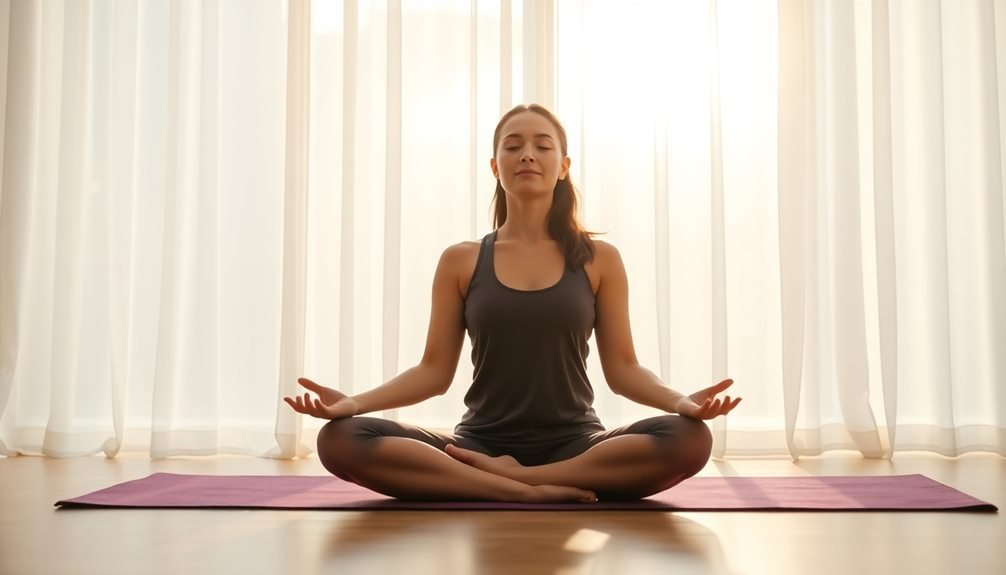
Many people turn to yoga as a natural remedy for anxiety, and science backs up this ancient practice. When you engage in yoga, your body releases endorphins and lowers cortisol levels, creating a natural calming effect that can last for hours after your session.
The combination of controlled breathing, mindful movement, and meditation helps activate your parasympathetic nervous system, which counteracts your body's stress response.
You'll find that regular yoga practice improves your vagal tone, enhancing your body's ability to recover from stress more efficiently. The mindfulness aspect of yoga teaches you to stay present, reducing worries about the future and regrets about the past.
As you focus on your breath and physical sensations, you'll naturally shift away from anxious thoughts.
Research shows that practicing yoga for just 20 minutes can notably reduce anxiety symptoms. The practice also improves sleep quality, reduces muscle tension, and increases GABA levels in your brain – a neurotransmitter that helps regulate anxiety.
Essential Breathing Techniques
Proper breathing forms the foundation of any effective yoga practice for anxiety relief. When you're feeling anxious, your breath becomes shallow and rapid, triggering your body's stress response. Learning to control your breath through specific techniques can help calm your nervous system and reduce anxiety symptoms almost immediately.
The most effective breathing technique for anxiety is called "Pranayama," which combines conscious breath control with mindful awareness. You'll want to start by finding a comfortable seated position and closing your eyes. Focus on lengthening both your inhales and exhales, making them slow, steady, and equal in duration.
- Practice "Square Breathing" by inhaling for 4 counts, holding for 4, exhaling for 4, and pausing for 4.
- Try "Alternate Nostril Breathing" to balance your energy and calm racing thoughts.
- Use "Bee Breath" (Bhramari) by making a humming sound on the exhale to soothe your mind.
- Master "Ocean Breath" (Ujjayi) by creating a soft sound in your throat while breathing.
Remember to practice these techniques daily, even when you're not feeling anxious, to build a strong foundation for managing future stress.
Beginner-Friendly Anxiety-Reducing Poses
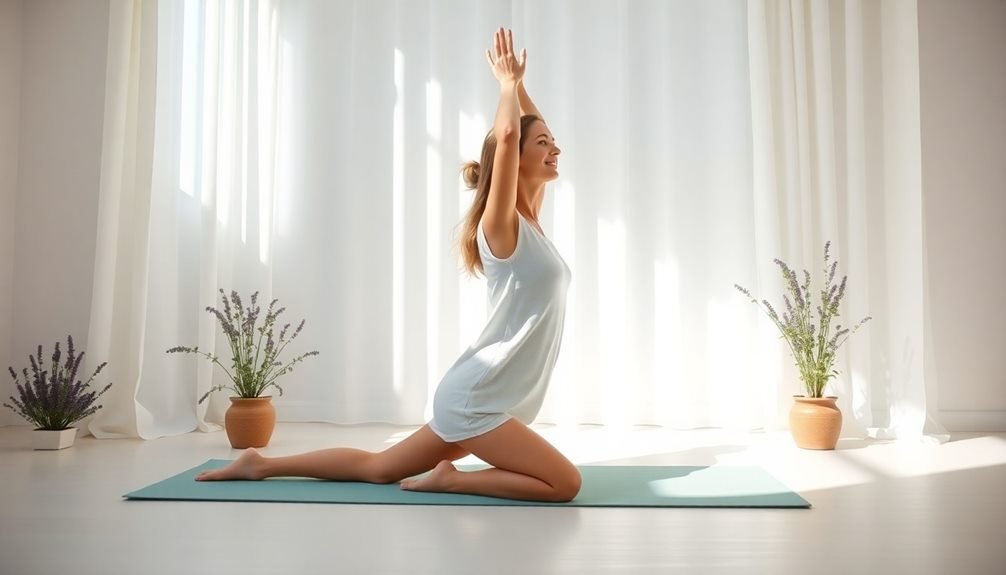
Simplicity lies at the heart of effective anxiety relief through yoga. When you're feeling anxious, these beginner-friendly poses can help calm your mind and release physical tension.
Start with Child's Pose (Balasana) by kneeling and folding forward, letting your forehead rest on the mat while your arms extend forward or rest alongside your body. This gentle forward fold naturally slows your breathing and creates a sense of safety.
Move into Legs-Up-the-Wall pose (Viparita Karani) by lying on your back and extending your legs up a wall at a 90-degree angle. This gentle inversion helps reduce stress hormones and calms your nervous system.
Practice Cat-Cow stretches (Marjaryasana-Bitilasana) to release upper body tension by alternating between arching and rounding your spine while on hands and knees.
Frequently Asked Questions
How Long Does It Take to Notice Reduced Anxiety Through Yoga Practice?
You'll notice anxiety relief after just one yoga session, but consistent practice over 2-3 weeks brings lasting benefits. Your stress levels can drop considerably when you maintain a regular practice schedule.
Should I Do These Poses in the Morning or Before Bedtime?
You can practice these poses either time. Morning routines energize your day and reduce anticipatory anxiety, while evening sessions help you unwind. Choose what fits your schedule and anxiety patterns best.
Can I Practice Anxiety-Relieving Yoga Poses During a Panic Attack?
Yes, you can do gentle yoga during a panic attack. Focus on simple poses and deep breathing. Start with child's pose or sitting cross-legged, and don't force yourself if you're not comfortable.
Will Combining Meditation With These Poses Enhance Their Anxiety-Reducing Effects?
Yes, you'll notice greater anxiety relief when you pair meditation with these poses. Focusing on your breath and practicing mindfulness while holding positions helps calm both your mind and body more effectively.
Do I Need Any Special Props or Equipment for Anxiety-Relief Poses?
You don't need special equipment for anxiety-relief poses. A yoga mat's helpful but not essential. You can use pillows, blankets, or towels from home for comfort and support during practice.
In Summary
You're now equipped with simple yet powerful tools to manage anxiety through yoga. These three poses, combined with proper breathing, can become your go-to stress relievers whenever you need them. Remember, you don't have to be a yoga expert to reap the benefits – even a few minutes of mindful practice can help calm your nervous system and bring you back to center.
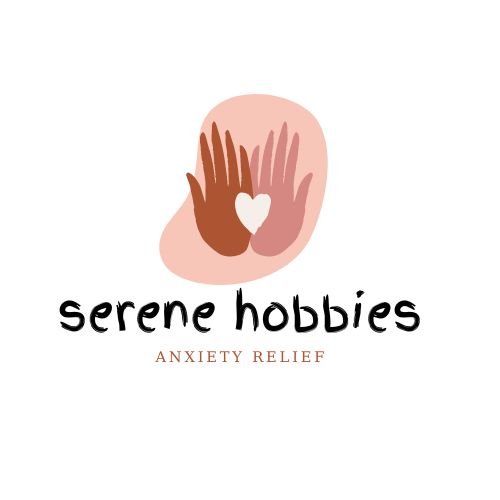
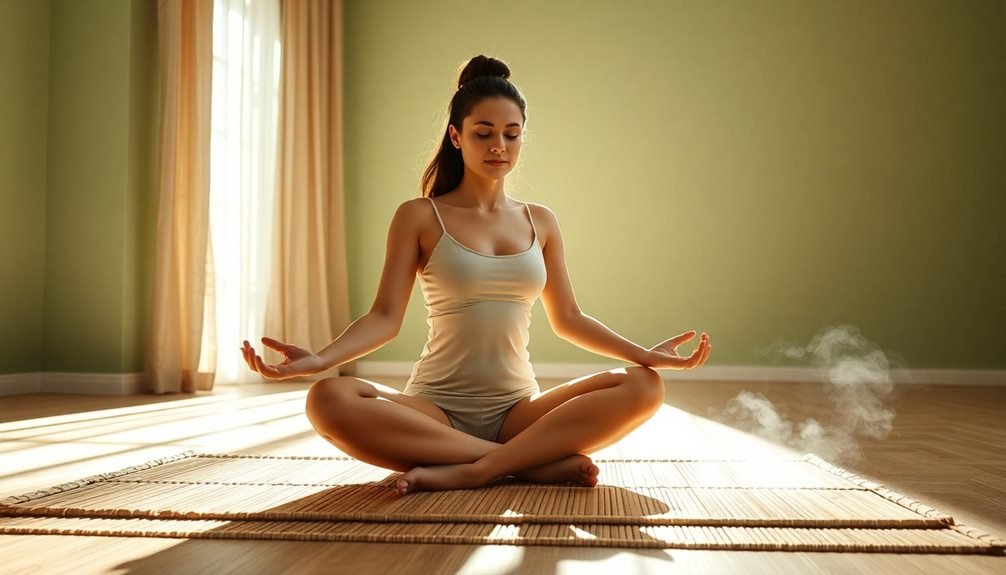
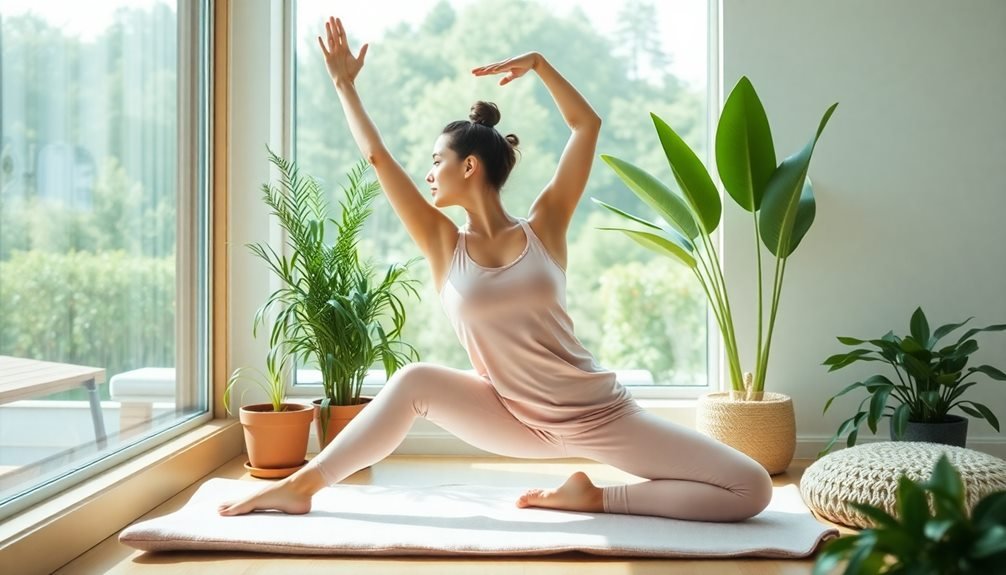
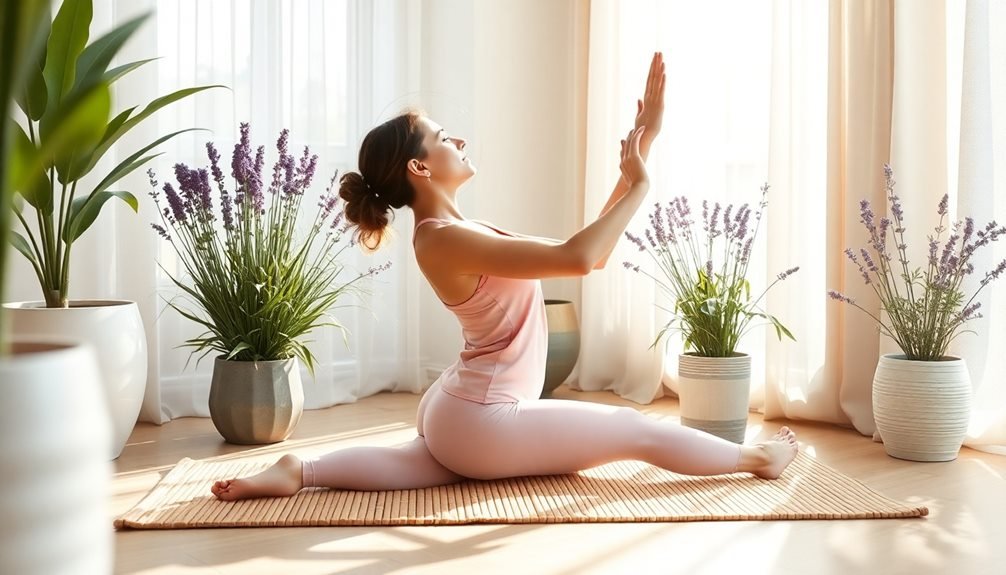
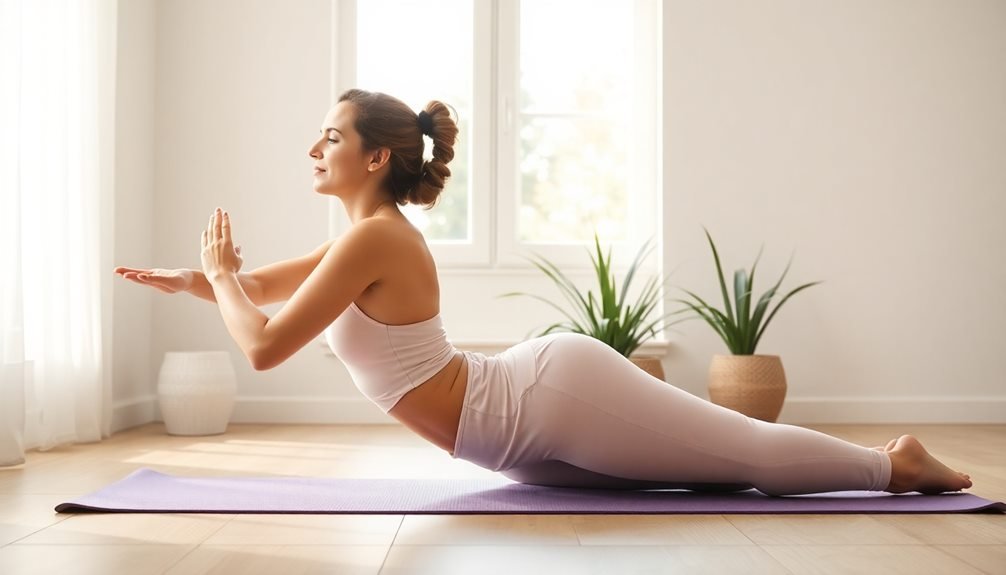
Leave a Reply